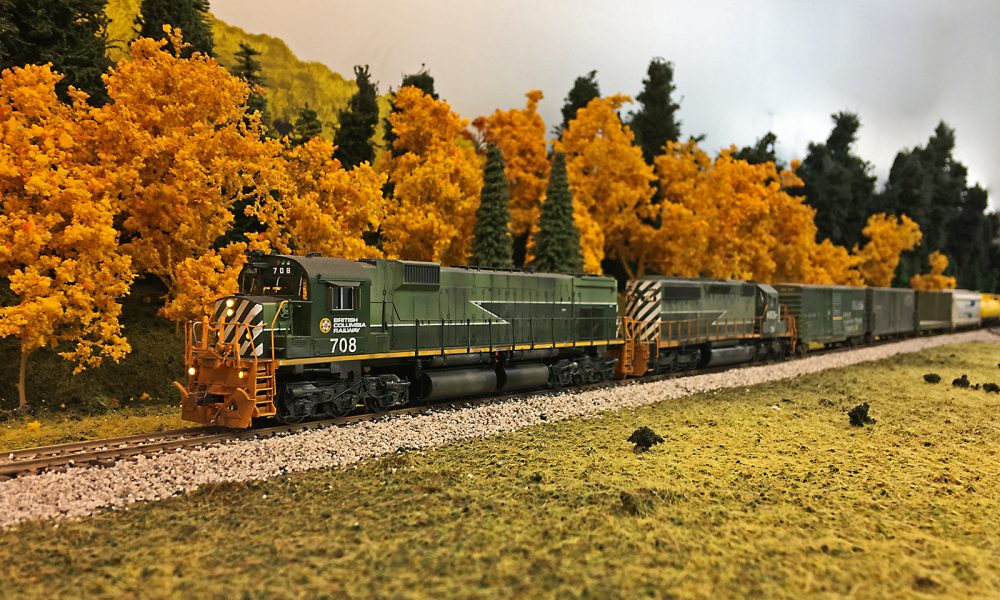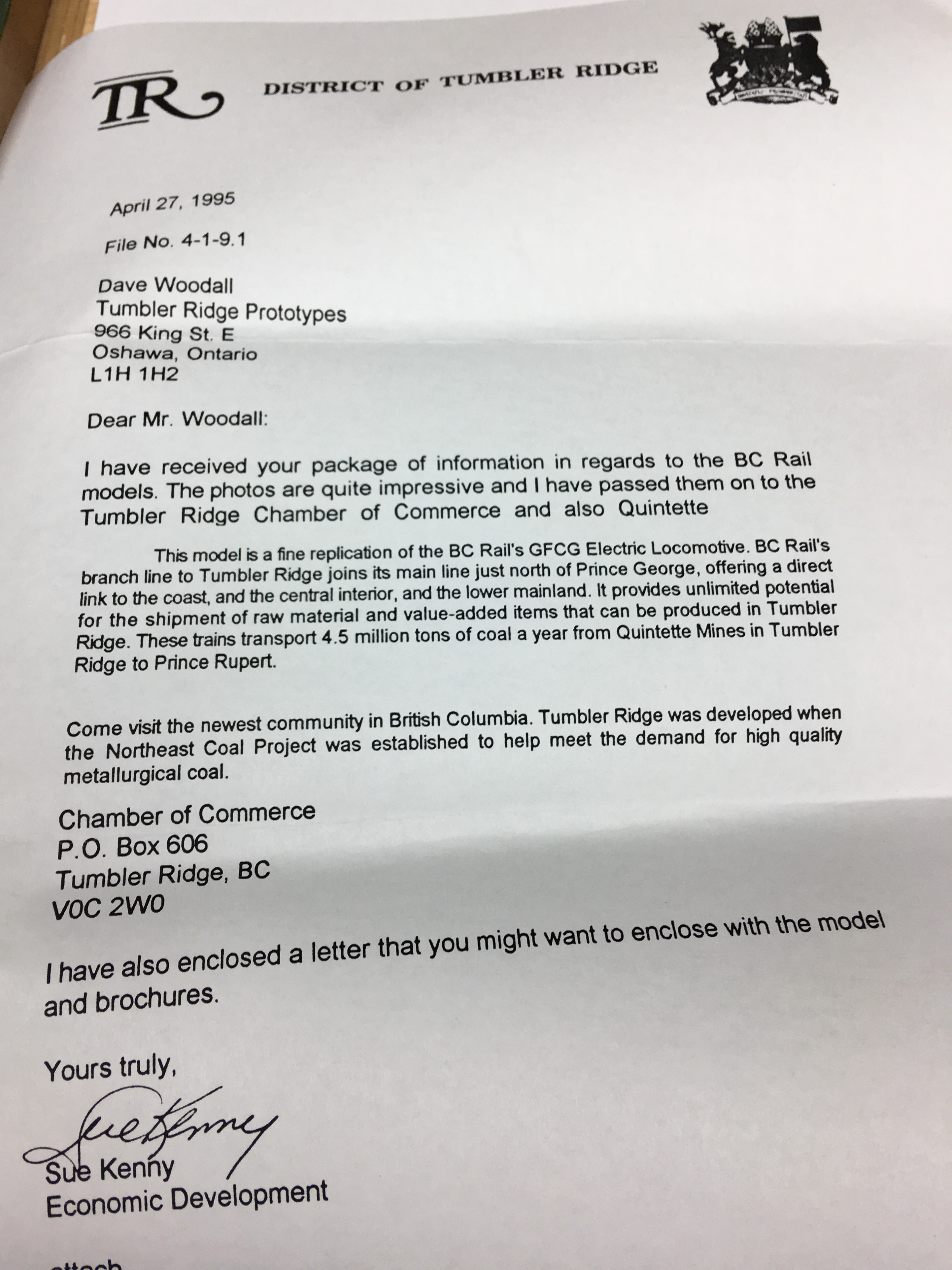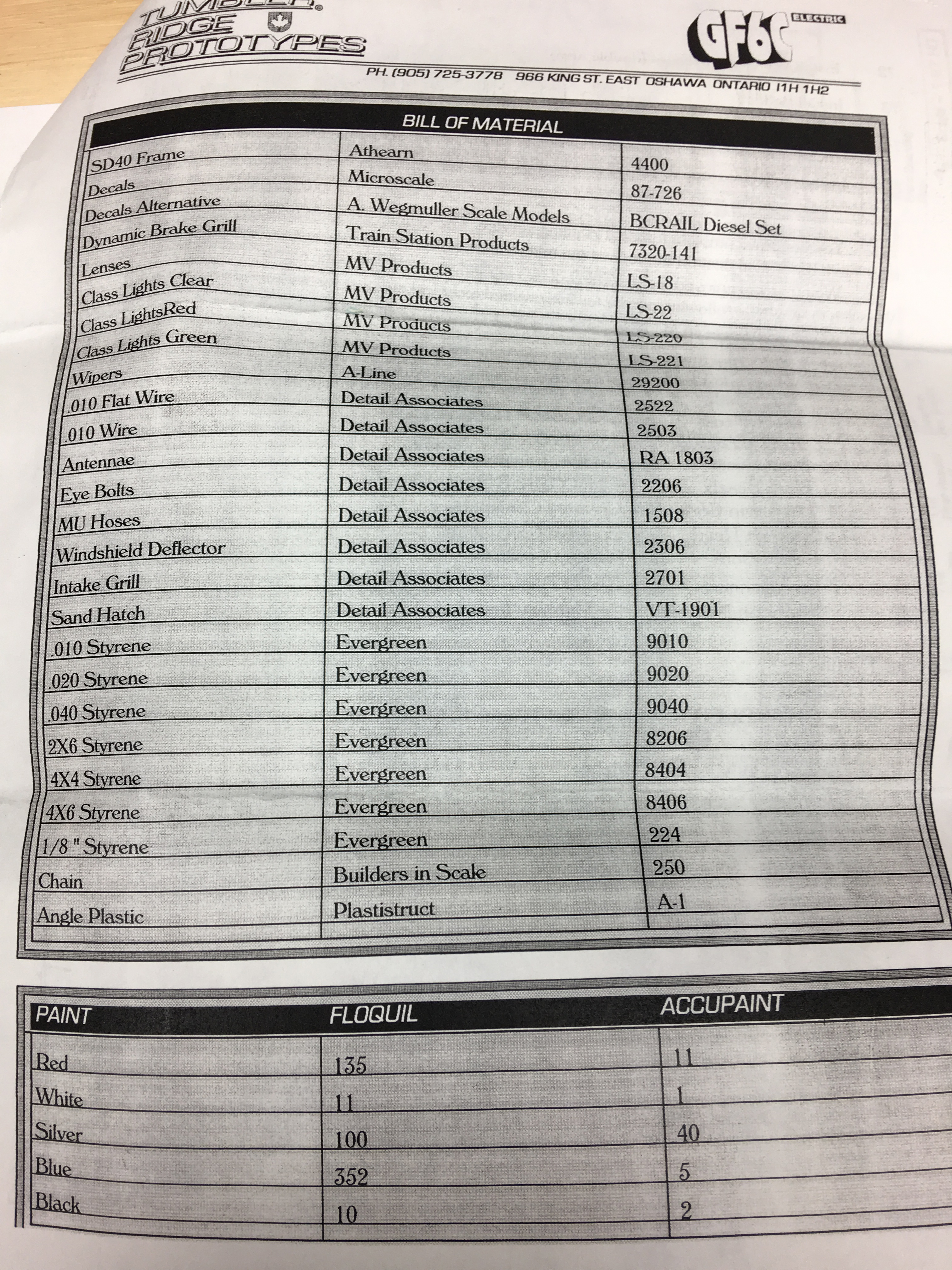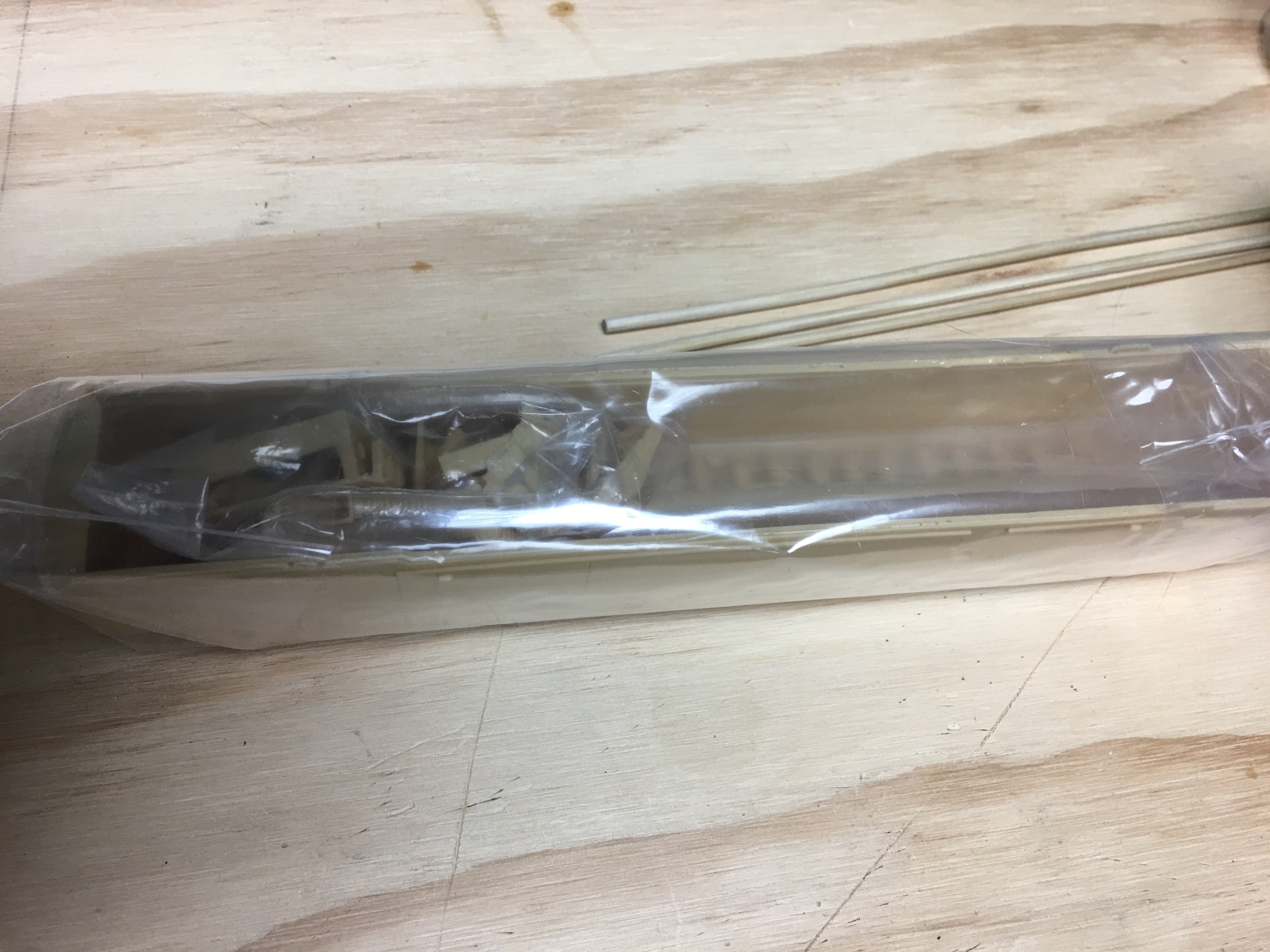After a wait of four years (!) Bowser Trains has released the HO scale M630 in British Columbia Railway and PGE schemes. Unfortunately The factory made an error in the ditch light housings that was not caught until the model had arrived at Bowser’s office in Pennsylvania.
The pair of ditch lights on the short hood (or nose) on the model came flush mounted, whereas they are recessed into the nose on the prototype. Bowser has since decided to offer a replacement shell program (more info on their website) but I decided to modify the ditch lights on the pair of models I purchased.
Step 1:
Remove the shell from the drive, and carefully remove the front handrail assembly to allow access to the nose. There is a factory PCB board behind the short hood that needs to be slid out of the way. The board is press fit into the nose, so don’t bother removing the small screw that is on the board Drill out the clear plastic lens inserts on both nose ditch lights. Once this is done, place a set of tweezers into the light casing and with a gentle twist remove them from the nose. Set the ditch light castings aside for now.

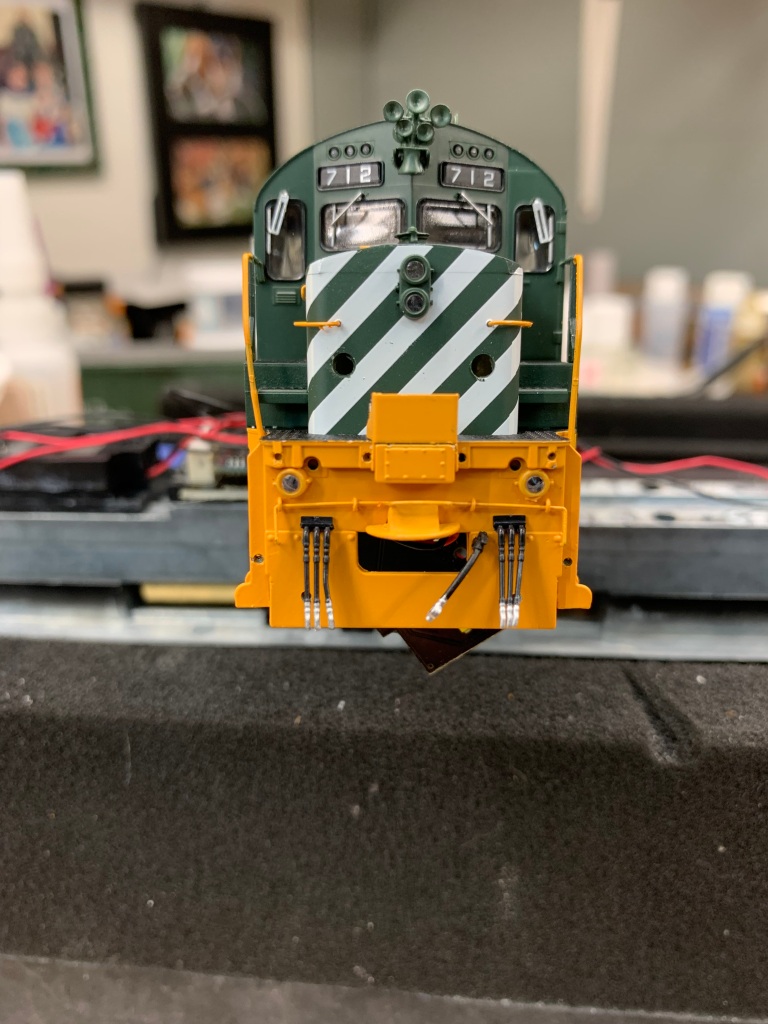
Step 2:
Using a 5/32 drill bit, carefully and slowly start to drill out the factory holes. I held the bit in my hand and found the plastic to be soft, which made the job easy. Once through, clean up any rough edges with an X Acto knife, and make sure there are no rough spots inside the nose.

Step 3:
Cut a couple of small squares of 0.020 styrene and glue them to the inside of the nose. These will act as a backing plate for the ditch lights. Once the glue has dried get some black paint and paint the inside of the nose to prevent any light bleed from the LED’s

Step 4:
Mark the center of each new ditch light hole, and drill a smaller hole using a 3/32″ drill bit, again turning the bit in your hand. Once complete, paint the inside of the recess dark green. I used Scalecoat CNSIG dark green, produced years ago as a special run. You may have to find a green paint that is a close match to the factory Bowser paint.
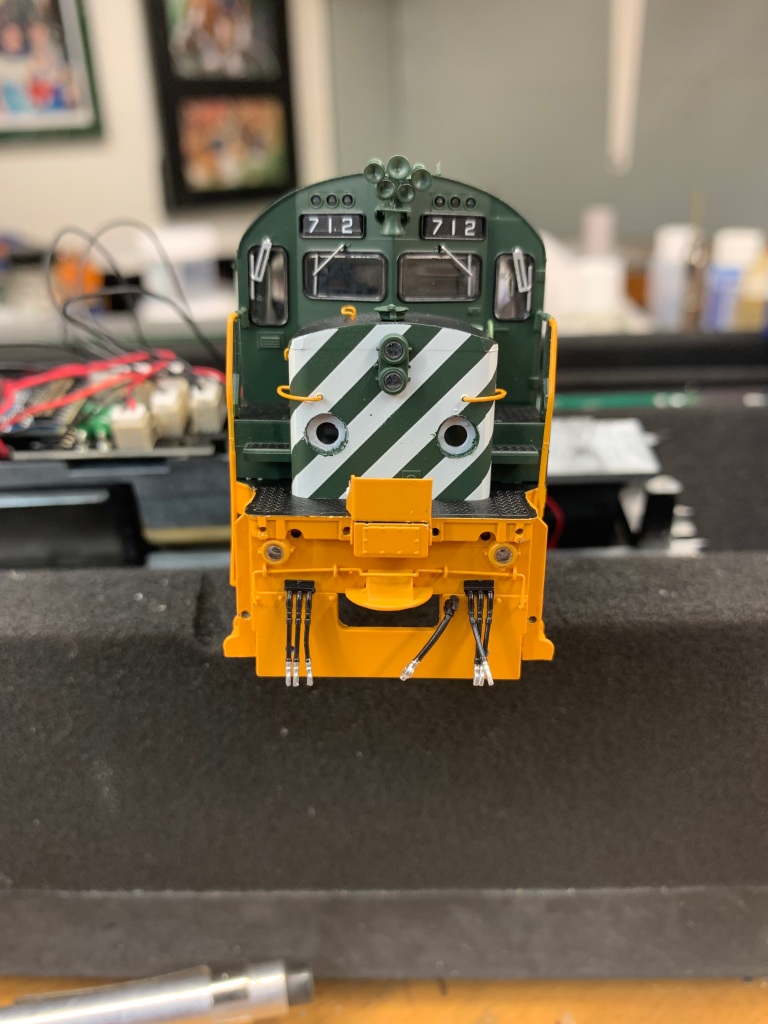
Step 5:
The factory ditch light castings have a small flange on the backside that will fit into the smaller hole you drilled into the backing plate. Glue the castings in place, and fit the LED PCB board back into place. It should fit with no issues. Be warned that the wiring in the shell is a bit messy, so take care not to pinch any wires when you re assemble the model.

Step 6:
Re attached the lighting PCB board to the back of the short hood, add the front handrails and mate the body to the chassis. Test the lights out to ensure they function. I added a couple drops of Testor’s clear glue for lenses in the ditch lights.

Now take the models to the weathering bench for maximum realism!

